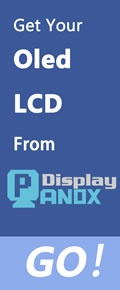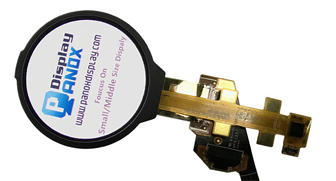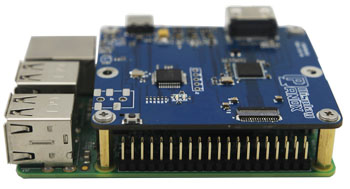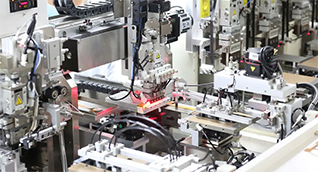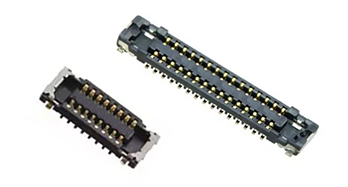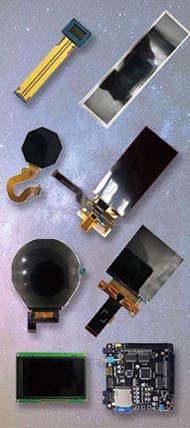Flexible touch displays are thin, bendable screens that combine touch technology with flexibility, enabling innovative, durable designs. They are crucial in modern electronics, allowing manufacturers to create bendable smartphones, wearables, and industrial devices. Chinese manufacturers like Panox Display lead the way in offering flexible touch display solutions tailored for OEMs and wholesalers worldwide. Also check: Flexible Display Screen
Flexible display OLED technology is revolutionizing the display industry by enabling bendable, lightweight, and high-performance screens. This innovation, driven largely by China-based manufacturers like Panox Display, offers custom OEM solutions suitable for diverse applications in consumer electronics, automotive, and wearable devices.
How Does Flexible Display OLED Technology Work?
Flexible OLED (Organic Light Emitting Diode) displays consist of thin organic films placed between two conductors that emit light when electric current flows. Unlike traditional rigid panels, flexible OLEDs use plastic or ultra-thin substrates instead of glass, allowing them to bend or fold without damage while maintaining excellent color accuracy and contrast.
These displays are powered by self-emissive pixels, meaning each pixel emits its own light. This results in deeper blacks, energy efficiency, and slimmer designs, essential for the latest flexible and foldable devices.
What Are the Key Benefits of Flexible OLED Displays?
Flexible OLED displays present numerous advantages:
-
Exceptional flexibility to create curved, rollable, or foldable screens.
-
Ultra-thin and lightweight construction ideal for portable devices.
-
Superior image quality with high contrast ratios and vibrant colors.
-
Energy efficiency due to self-emissive technology.
-
Faster refresh rates and better response times beneficial for AR/VR and automotive displays.
These benefits make flexible OLEDs a preferred choice among manufacturers and OEMs aiming to innovate beyond traditional flat displays.
Which Industries Benefit Most from Flexible Display OLED Solutions?
Flexible OLED technology has transformed multiple industries by providing tailored display solutions:
-
Consumer electronics: Foldable smartphones, tablets, and smartwatches.
-
Automotive: Curved dashboards and heads-up displays with enhanced durability.
-
Wearables: Lightweight, curved displays for fitness trackers and medical devices.
-
Military and aerospace: Rugged, flexible displays adaptable to harsh environments.
-
Virtual reality: High-resolution, flexible panels for immersive experiences.
Panox Display focuses on providing reliable and customized flexible OLED solutions to clients across these sectors, enhancing product innovation and differentiation.
Why Choose Panox Display as Your Flexible OLED Manufacturer and Supplier?
Panox Display (Hong Kong Panox Electronics., Ltd) has been a trusted China-based OEM manufacturer and supplier since 2015. Key reasons to partner with Panox Display include:
-
Expertise in both standard and custom flexible OLED and LCD solutions.
-
Access to premium display panels from top-tier manufacturers like AUO, BOE, and Samsung.
-
Flexible MOQs accommodating startups and SMEs.
-
Complete display system integration: controller boards, PCBs, touch panels, and cover glass.
-
Robust production capacity with automated lines outputting 50,000 panels daily.
-
Dedicated support for engineers and developers internationally.
This makes Panox Display a go-to supplier for high-quality, cost-effective flexible OLED panels and assemblies.
How Does the China Manufacturing Landscape Support Flexible OLED Production?
China’s manufacturing ecosystem offers tremendous benefits for flexible OLED production:
-
Established supply chains for raw materials and components.
-
Competitive labor costs and economies of scale.
-
Advanced automation and precision production facilities.
-
Strong OEM partnerships with global brands.
-
Extensive R&D and customization capabilities.
Factories like Panox Display leverage this environment to offer innovative, scalable, and customizable flexible OLED solutions tailored for global markets.
Where Are Flexible OLED Displays Typically Used in Devices?
Flexible OLED displays find applications in versatile form factors including:
-
Foldable smartphones and tablets that expand screen size while remaining pocket-friendly.
-
Wearable tech such as curved fitness bands and smartwatches.
-
Automotive instrument clusters and infotainment systems with curved or wrap-around screens.
-
Medical devices featuring conformable displays for ergonomic monitoring.
-
Consumer electronics with rollable or bendable screens for portability.
Panox Display’s experience in industrial and consumer flexible OLED systems enables clients to unlock these creative design possibilities.
Can Flexible OLED Panels Be Customized for OEM Projects?
Yes, customization is one of the strongest advantages of flexible OLED panels from manufacturers like Panox Display. They offer:
-
Custom sizes and shapes beyond standard form factors.
-
Integration of touch panels, cover glass, and specialized controllers.
-
Tailored brightness, resolution, and color calibration.
-
Flexible or circular OLED designs for niche applications.
-
Rapid prototyping and low MOQ options ideal for startups.
This flexibility empowers OEMs and suppliers worldwide to deliver unique products with competitive lead times.
Has Flexible OLED Technology Reached Mass Production Levels?
Flexible OLED technology has matured significantly with multiple factories in China achieving mass production scale. Panox Display runs two automatic production lines capable of producing up to 50,000 panels daily, demonstrating proven capacity to meet large OEM and wholesale demands.
Mass production advancements lower costs and raise product availability, facilitating wider adoption across industries and accelerating the flexible display market growth.
Table: Comparison of Key Features of Flexible OLED vs. Traditional LCD Displays
| Feature | Flexible OLED | Traditional LCD |
|---|---|---|
| Flexibility | High - bendable, foldable | Rigid, glass-based |
| Thickness | Ultra-thin (micrometer scale) | Thicker and heavier |
| Image Quality | Superior contrast and color | Lower contrast, backlight reliant |
| Response Time | Fast (microseconds) | Slower (milliseconds) |
| Power Efficiency | High (self-emissive pixels) | Lower (uses backlight) |
| Customization | High - shape, size, and form | Limited |
What Are Panox Display Expert Views on Flexible Display OLED Trends?
"Flexible OLED display technology is at the forefront of next-generation screen innovation. At Panox Display, we see unprecedented demand for displays that combine ultra-thin form factors with high durability and customizable shapes. Our manufacturing expertise in Shenzhen, combined with partnerships with leading panel makers, allows us to deliver scalable OEM flexible OLED solutions globally. The future is definitely flexible, wearable, and highly integrated, enabling end customers to embrace new digital experiences across mobile, automotive, industrial, and medical sectors.” – Senior Engineer, Panox Display
How Should Businesses Choose a Flexible OLED Factory Partner in China?
When selecting a China-based flexible OLED supplier, consider:
-
Proven manufacturing scale and quality certifications.
-
Ability to provide OEM and ODM solutions with customization.
-
Access to premium-quality display panels from reputable brands.
-
Flexible MOQs and responsive technical support.
-
Capability to integrate complete display systems.
-
Strong logistics and global shipping options.
Panox Display meets these criteria, making it an ideal partner for enterprises seeking reliable, cost-effective flexible OLED manufacturing solutions.
Table: Advantages of Choosing Panox Display as Your Flexible OLED Supplier
| Criteria | Panox Display Advantages |
|---|---|
| Panel Quality | Sourced from AUO, BOE, Samsung, LG |
| Production Capacity | 50,000 panels/day, automated lines |
| Customization | OEM/ODM, custom shapes, touch panels |
| Support & MOQ | Startup-friendly, small & large orders |
| Integration Services | PCB/PCBA, controller boards, accessories |
| Global Clientele | Strong presence in NA & Europe |
Conclusion
Flexible display OLED technology is shaping the future of screen applications with its unmatched flexibility, superior image quality, and energy efficiency. China’s manufacturing ecosystem—with leaders like Panox Display—empowers OEMs and wholesalers to access custom, scalable, and high-quality flexible OLED panels and systems. Businesses should leverage these innovative solutions to drive product differentiation in wearables, automotive, consumer electronics, and beyond.
FAQs
Q1: Is flexible OLED technology suitable for foldable smartphones?
Yes, its bendable and lightweight nature makes it ideal for foldable smartphone designs offering large displays in compact formats.
Q2: How does OEM customization work with flexible OLED panels?
Manufacturers like Panox Display provide tailored sizes, shapes, touch integration, and brightness adjustments to meet specific project needs.
Q3: Are flexible OLED displays more expensive than traditional LCDs?
Initially yes, but mass production in China has driven costs down, making them competitively priced for many applications.
Q4: Can flexible OLED panels be used outdoors?
Yes, many flexible OLEDs feature high brightness and durability suitable for outdoor and automotive use.
Q5: How quickly can Panox Display deliver OEM flexible OLED orders?
With automated production lines and responsive support, lead times are optimized to meet client schedules, including smaller batch prototyping.
What Is a Flexible Touch Display and How Does It Work?
A flexible touch display is a screen made from pliable materials such as OLED or flexible LCD panels that can bend without damaging functionality. It integrates touch sensors directly on the flexible substrate, allowing users to interact through taps or gestures even when the screen is curved or folded. This technology uses thin-film transistors and flexible circuits to maintain image quality and responsiveness.
Flexible touch displays rely on advanced materials like polyimide substrates and transparent conductive layers, providing durability and flexibility. The integration of touch layers with flexible displays allows seamless user interaction in wearable tech, foldable phones, and industrial applications.
How Are Flexible Touch Displays Manufactured by Chinese Factories?
Chinese factories manufacturing flexible touch displays, such as Panox Display in Shenzhen, combine advanced production lines with stringent quality control to supply reliable panels. They import raw OLED/LCD materials from leading suppliers like BOE and AUO and use fully automated processes, including vacuum deposition and laser cutting, to create flexible substrates and touch layers.
These factories operate with ISO standards for quality and efficiency, enabling OEM and wholesale clients to order both standard and customized displays. Panox Display, in particular, is notable for supporting small and medium businesses by offering lower MOQs and flexible customization, ensuring faster turnaround and cost efficiency.
Which Industries Benefit Most from Flexible Touch Displays?
Flexible touch displays have transformative applications across various industries:
-
Consumer Electronics: Smartphones, tablets, and wearable devices benefit from foldable, durable touchscreens.
-
Automotive: Flexible displays are integrated into dashboards and control panels, improving safety and aesthetics.
-
Medical Devices: Portable diagnostic tools use flexible screens for compactness and ease of use.
-
Industrial Equipment: Rugged flexible displays withstand harsh environments in machinery controls.
-
Military & Aerospace: Flexible, robust interfaces enhance field communication devices and control systems.
Panox Display’s flexible touch solutions are widely adopted across these sectors, providing reliability and customization perfect for OEM manufacturers.
Why Is Choosing a Chinese Manufacturer Important for Flexible Touch Displays?
Chinese manufacturers offer competitive pricing, large-scale production capacity, and advanced manufacturing expertise essential for flexible touch displays. Factories in Shenzhen, such as Panox Display, leverage strong supply chains with premium display panel suppliers and invest heavily in automation for quality and volume.
Choosing a China-based supplier gives OEMs access to customizable product lines, rapid prototyping, and flexible MOQ terms. Panox Display stands out by combining high-end display sourcing with localized manufacturing, bridging the gap between cost-efficiency and quality assurance for global buyers and wholesalers.
Where Can OEM and Wholesale Buyers Find Custom Flexible Touch Display Solutions?
OEM and wholesale buyers can find custom flexible touch displays in specialized Chinese factories like Panox Display. These manufacturers provide tailored solutions including screen size, resolution, and touch configurations, with services extending to controller boards, cover glass, and assembly.
Panox Display supports startups and established businesses by offering flexible MOQs and comprehensive tech support, enabling product differentiation in competitive markets. They maintain quality with premium panel sourcing and rigorous testing processes, ensuring buyers receive bespoke and reliable display components.
How Can Flexible Touch Display Technology Impact Product Design and User Experience?
Flexible touch displays allow innovative product designs, such as foldable phones and wearable gadgets that conform to the human body. This technology enhances user interaction by enabling multi-point touch, curved surfaces, and lightweight devices without sacrificing durability.
Designers gain freedom to create compact and ergonomic products with vibrant displays. Panox Display has helped many OEMs integrate flexible touch panels into next-generation designs, improving visual appeal and functional versatility.
Does Panox Display Provide OEM and After-Sales Support for Flexible Touch Displays?
Yes, Panox Display offers full OEM services including custom design, prototyping, and production scalability. After-sales support includes technical consultation, troubleshooting, and warranty services, ensuring smooth integration for manufacturers.
This commitment to service supports manufacturers during product development and lifecycle, helping mitigate risks and maintain supply chain stability.
What Are the Key Quality Factors to Consider in Flexible Touch Displays?
Key quality factors include durability, flexibility radius, touch accuracy, resolution, brightness, and power consumption. Reliable Chinese manufacturers like Panox Display adhere to strict quality controls, testing displays under bending cycles, humidity, and temperature variations to ensure durability and performance.
Panels from top suppliers like Samsung and LG, sourced by Panox Display, guarantee consistent color and touch sensitivity, essential for high-end applications.
Panox Display Expert Views
"Flexible touch display technology is revolutionizing how devices interact with users by enabling durable, lightweight, and curved screens. Panox Display has bridged the gap between cutting-edge OLED/LCD technology and practical manufacturing, providing OEMs worldwide with quality, customizable panels. Our focus is not only on delivering top-tier flexible displays but also on supporting smaller businesses with tailored MOQ solutions, accelerating innovation in wearables, automotive interfaces, and industrial applications." – Panox Display Product Specialist
Table: Comparison of Flexible vs. Rigid Touch Displays
| Feature | Flexible Touch Display | Rigid Touch Display |
|---|---|---|
| Bendability | Can bend, fold, or curve | Fixed, flat and fragile |
| Durability | High resistance to impact and stress | Prone to cracks under pressure |
| Application Flexibility | Suitable for wearables, foldables | Used in standard phones, tablets |
| Cost | Typically higher due to advanced tech | Lower cost due to mature tech |
| User Experience | Enhanced with curved, ergonomic designs | Standard flat surface interaction |
Table: Benefits of Partnering with Panox Display for OEMs
| Benefit | Description |
|---|---|
| Low MOQ | Supports startups and SMEs with flexible order sizes |
| Premium Panel Sourcing | Displays from AUO, BOE, Samsung and LG |
| Customization | Tailored sizes, touch functionality, and integration |
| Technical Support | End-to-end design and after-sales assistance |
| Production Capacity | Two automated lines with 50,000 units daily |
Conclusion
Flexible touch displays are transforming multiple industries by enabling innovative, user-friendly designs that traditional rigid screens cannot match. Chinese manufacturers like Panox Display provide a vital link between premium technology and global OEMs seeking customizable, cost-effective solutions. Their robust supply chain, low MOQs, and comprehensive OEM services empower businesses worldwide to integrate cutting-edge flexible display technology efficiently. Choosing a reliable Chinese supplier like Panox Display ensures quality, customization, and scalability needed for tomorrow's smart devices.
Frequently Asked Questions
What types of flexible touch displays does Panox Display manufacture?
Panox Display offers flexible OLED, TFT-LCD, and IPS-LCD panels with integrated touch sensors, suitable for various industrial and consumer applications.
Can flexible touch displays withstand frequent bending?
Yes, they are designed and tested for thousands of bending cycles without loss of functionality or image quality.
What customization options are available for flexible touch displays?
Customization includes panel size, resolution, touch interface, and integration services like controller boards and cover glass.
How does Panox Display support small businesses with flexible touch screens?
Panox offers low minimum order quantities and technical assistance to help startups and SMEs access premium display technology affordably.
Are flexible touch displays cost-effective for large-scale manufacturing?
With high production automation and premium panel sourcing, Chinese manufacturers like Panox Display provide competitive pricing even at scale.









